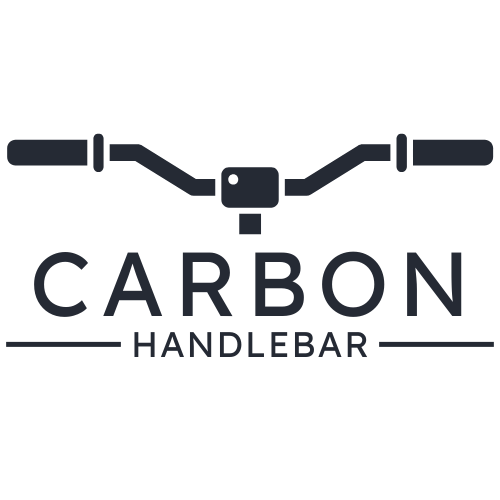Exploring Bicycle Handlebar Types: A Comprehensive Guide
When it comes to cycling, one of the critical components that significantly affects performance, comfort, and control is the handlebar. Different bicycle handlebar types cater to various riding styles, preferences, and terrains. Whether you’re a casual cyclist, a mountain biking enthusiast, or a road racing aficionado, understanding the different types of handlebars can help you make informed decisions about your bike setup. In this article, we’ll explore the most common bicycle handlebar types and how they can enhance your riding experience. For more insights on bike performance, check out Why Pro Riders Swear by Carbon Handlebars: Performance Breakdown.
Why the Right Handlebar Matters
The handlebars are not just a place to hold onto; they play a crucial role in steering, balance, and overall stability. The type of handlebar you choose can influence your posture, comfort during long rides, and the responsiveness of your bicycle. Factors such as the width, height, and shape of the handlebars can also impact your bike’s aerodynamics, especially in competitive settings. Understanding your specific needs will help you select the right handlebars for your cycling adventures. If you’re interested in performance enhancement, consider reading Does Upgrading to a Carbon Handlebar Improve Mountain Biking Performance?.
Types of Bicycle Handlebars
1. Flat Bars
Flat bars are one of the most common types found on mountain bikes and hybrid bikes. They provide a straightforward riding position that allows for easy steering and control.
Advantages:
- Offers an upright position for a more comfortable ride.
- Improves visibility on trails or city roads.
- Easy to control and maneuver, making them suitable for beginners.
Ideal For: Casual riders, mountain bikers, and urban cyclists. For more on riding styles, see How to Choose Carbon Handlebars: A Buyer’s Guide for Beginners.
2. Riser Bars
Riser bars are an extension of flat bars, featuring a slight rise at the ends. They elevate the grips, allowing riders to adopt a more comfortable and natural posture.
Advantages:
- Provides added reach and leverage.
- Offers better control on downhill descents.
- Reduces strain on the back and shoulders.
Ideal For: Mountain bikers and trail riders looking for increased stability.
3. Drop Bars
Commonly seen on road bikes, drop bars curve downwards allowing for multiple hand positions and a more aerodynamic riding style.
Advantages:
- Provides various hand positions for long-distance comfort.
- Lowers the rider’s wind resistance, making it efficient for speed.
- Ideal for climbing and aggressive riding.
Ideal For: Road racers and cyclists engaged in long-distance rides. Consider reading Top 10 Benefits of Carbon Handlebars Every Cyclist Should Know.
4. Bullhorn Bars
Bullhorn bars extend forward and upwards, providing a closer grip that can enhance control during sprints.
Advantages:
- Offers an aggressive riding position.
- Allows for multiple hand placements.
- Provides stability and control at higher speeds.
Ideal For: Fixed gear and track cyclists.
5. Mustache Bars
Mustache bars are a blend of drop and flat bars, shaped like a mustache that allows for multiple positions.
Advantages:
- Provides a comfortable, ergonomic grip.
- Offers versatility for different riding styles.
- Ideal for touring and commuter bikes.
Ideal For: Commuters, touring cyclists, and those seeking comfort without sacrificing style.
6. Aero Bars
Designed specifically for triathletes and time trialists, aero bars allow for an aggressive position that minimizes air resistance.
Advantages:
- Reduces wind drag significantly.
- Offers a stable and aerodynamic riding position.
- Ideal for maximizing speed in time trials.
Ideal For: Competitive cyclists and triathletes.
Choosing the Right Handlebar Type
When selecting the right handlebar type for your bike, consider the following factors:
- Riding Style: Are you a casual cyclist, a mountain biking enthusiast, or a competitive racer? Your riding style will dictate the best handlebar option. Refer to 5 Must-Ask Questions Before Buying Carbon Handlebars for more guidance.
- Comfort: Evaluate your flexibility and comfort preferences to find handlebars that offer the best ergonomic positions for your body.
- Terrain: The kind of terrain you ride on—whether it’s rough trails or smooth pavement—will influence handlebar choice.
- Personal Preference: Ultimately, your comfort and control are paramount. Test different handlebars to see what feels right for you.
Understanding the various bicycle handlebar types is crucial for optimizing your cycling experience. Whether you prefer the upright comfort of flat bars, the aerodynamic advantage of drop bars, or the versatility of mustache bars, there is a perfect handlebar type out there for you. As you explore your options, remember to consider your riding style, comfort needs, and terrain requirements. Selecting the right handlebars will enhance not only your comfort but also your performance, making every ride a more enjoyable adventure.
Now that you’re equipped with knowledge about different bike handlebar types, it’s time to hit the roads or trails and find the perfect fit for your cycling journey! For maintenance tips, don’t forget to read The Ultimate Carbon Handlebar Maintenance Checklist for 2025.
